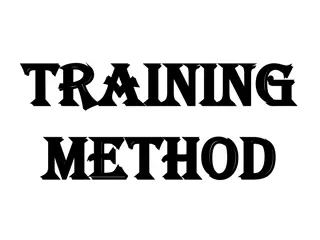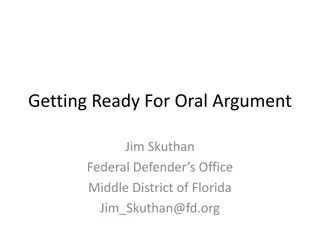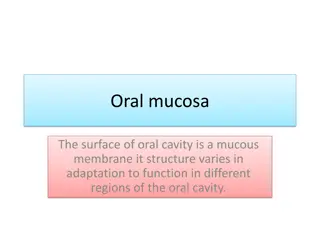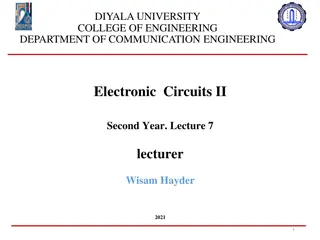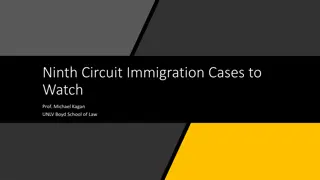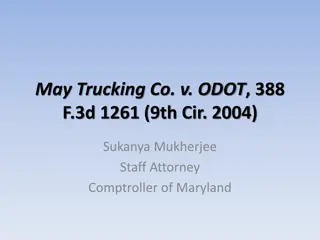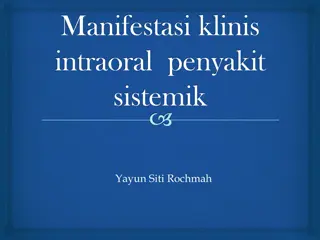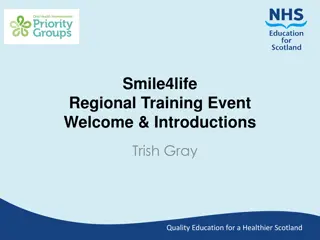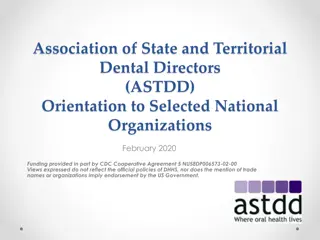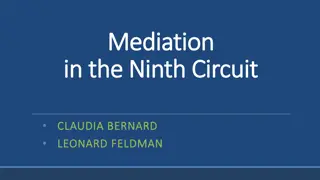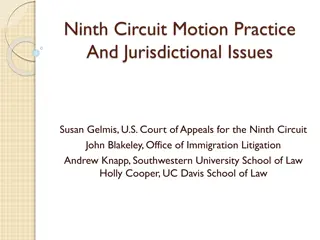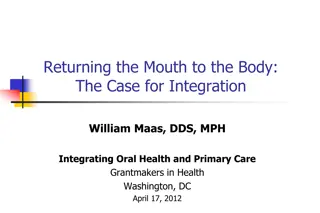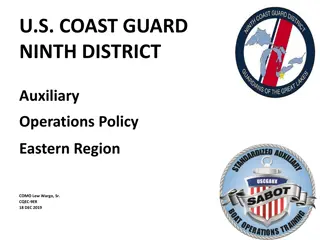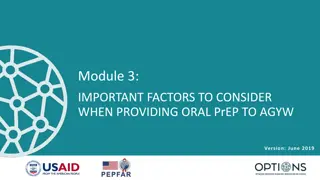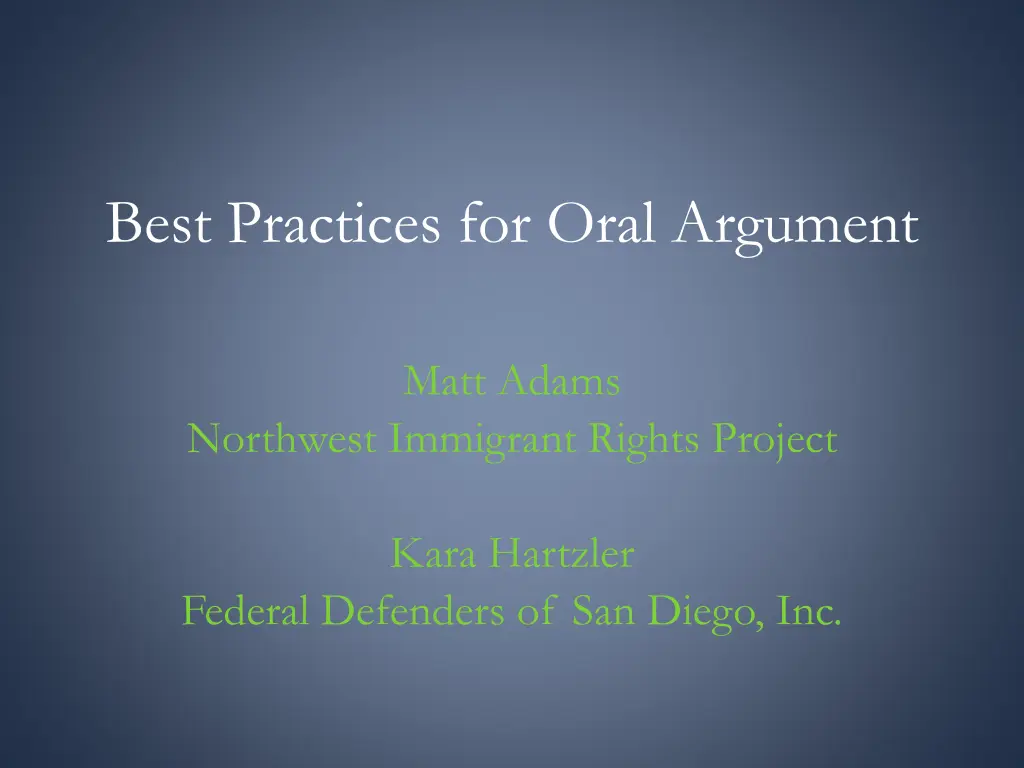
Effective Techniques for Oral Argument Success
Master the art of oral argument with these expert tips from legal professionals. Learn how to manage your time effectively, provide concise responses, pivot in debates, appear reasonable, and tackle tough issues head-on to strengthen your case presentation in court.
Download Presentation

Please find below an Image/Link to download the presentation.
The content on the website is provided AS IS for your information and personal use only. It may not be sold, licensed, or shared on other websites without obtaining consent from the author. If you encounter any issues during the download, it is possible that the publisher has removed the file from their server.
You are allowed to download the files provided on this website for personal or commercial use, subject to the condition that they are used lawfully. All files are the property of their respective owners.
The content on the website is provided AS IS for your information and personal use only. It may not be sold, licensed, or shared on other websites without obtaining consent from the author.
E N D
Presentation Transcript
Best Practices for Oral Argument Matt Adams Northwest Immigrant Rights Project Kara Hartzler Federal Defenders of San Diego, Inc.
Tip #1: Know Your (Time) Limits Plan to make 2-3 points maximum Be disciplined about time Consider not announcing you d like to reserve two minutes just stop yourself
Tip #2: Use Short Declarative Answers Don t explain your way into an answer give a short declarative response and then explain afterwards
Example #1: Judge: So why isn t this a CIMT? Lawyer: Well, this Court said in Nunez that CIMTs generally have to fall in one of three categories. One category is an intent to harm, but this statute only requires a reckless mens rea. Another category is causing actual harm, but this statute doesn t require that the victim suffer any injury or loss. And the third category is that the offense be committed against a protected class of victim, but this statute can be committed against anyone. So the statute doesn t involve an intent to harm, actual harm, or a protected class.
Example #2 (BETTER): Judge: So why isn t this a CIMT? Lawyer: Because it doesn t involve an intent to harm, actual harm, or a protected class. This Court said in Nunez that CIMTs generally have to fall in one of three categories. One category is an intent to harm, but this statute only requires a reckless mens rea. Another category is causing actual harm, but this statute doesn t require that the victim suffer any injury or loss. And the third category is that the offense be committed against a protected class of victim, but this statute can be committed against anyone. So it doesn t fall into any of the three categories of offenses that qualify as CIMTS.
Tip #3: Know How to Pivot Don t dig your heels in; be willing to shift to alternative theories. Even if you disagree with us on X, we still win under Y.
Tip #4: Strive to Appear Reasonable What can you concede that won t hurt you? Acknowledge judges concerns We re not saying client is an angel, but he still doesn t deserve X.
Tip #5: Dont Avoid Tough Issues Primary responsibility at arguments is to address concerns raised by Judges not to simply repeat your favorite points Be prepared to address your most vulnerable issues
Tip #5: Dont Avoid Tough Issues (cont.) In preparing for arguments, reread your briefs, and try to address any rough or inarticulate arguments.
Tip #6: Prepare two versions Have one set of key talking points: two or three critical points that you want to address even if you get hammered. Have a long version of talking points: be prepared for when the Judges give you more latitude.
Tip #6: Listen! The Judges have your briefs, now try to figure out what they are not sold on Do not dodge the questions Do not interrupt the questions Yes or No
Tip #7: Be Specific on What you Want Be prepared to tell the Court what is now required to resolve the Petition for Review. E.g., are you seeking a general remand that allows the BIA to reconsider whether the conviction qualifies as a CIMT or has the BIA already had their opportunity and you now ask the Court to resolve the question?

